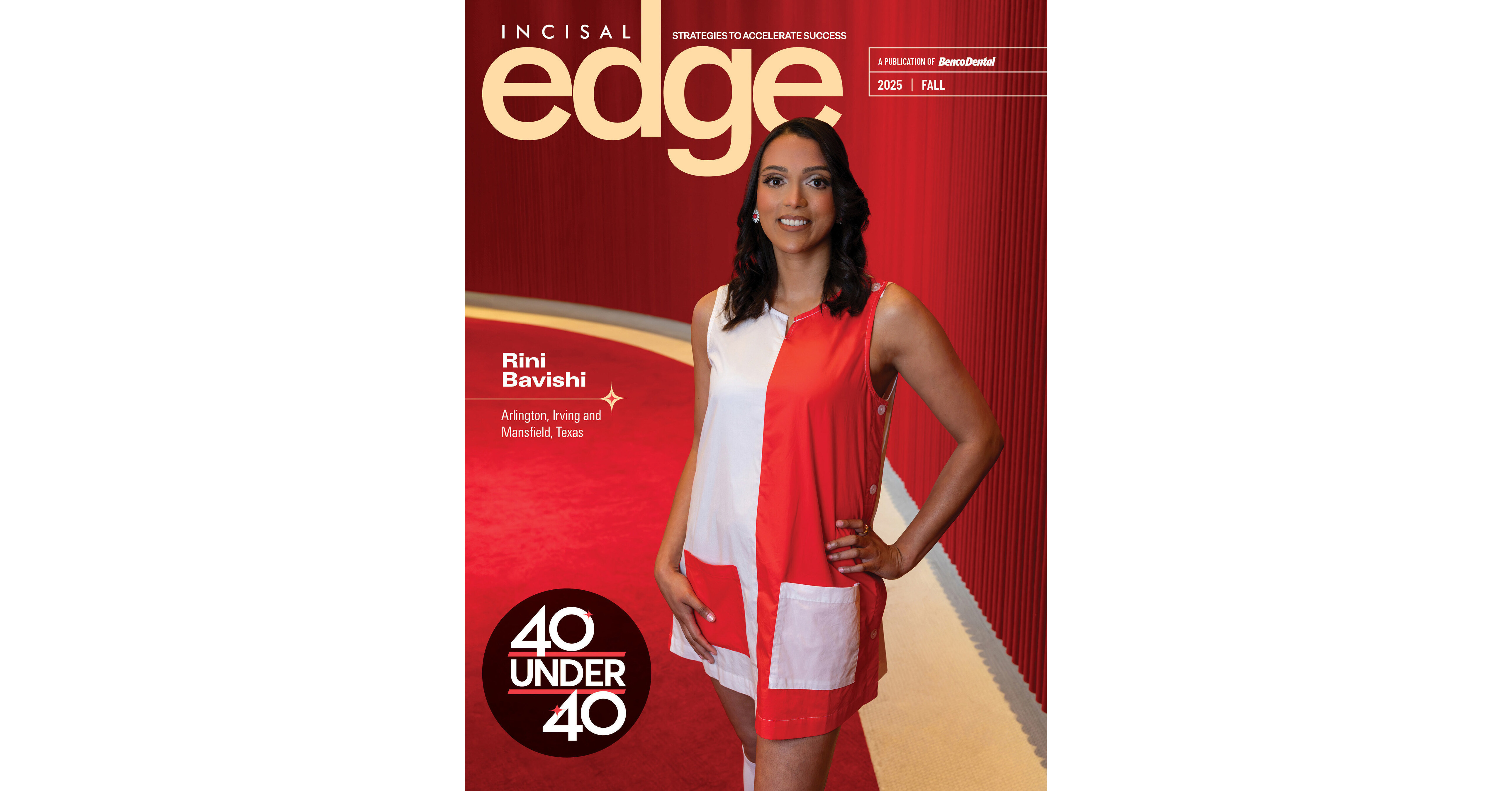Providing Strategic Medical Guidance in Advancing HyBryte™ Clinical Development
PRINCETON, N.J., Oct. 14, 2025 /PRNewswire/ — Soligenix, Inc. (Nasdaq: SNGX) (Soligenix or the Company), a late-stage biopharmaceutical company focused on developing and commercializing products to treat rare diseases where there is an unmet medical need, announced today the update of its United States (U.S.) Medical Advisory Board (MAB) for cutaneous T-cell lymphoma (CTCL) to provide medical/clinical strategic guidance to the Company as it advances the Phase 3 clinical development of HyBryte™ (synthetic hypericin) for the treatment of CTCL, a rare class of non-Hodgkin’s lymphoma (NHL).
Comprised of dermatologic and oncologic thought leaders with extensive experience in CTCL, the MAB has played an important advisory role in the conduct of the ongoing FLASH2 Phase 3, pivotal clinical study and will continue to contribute to the program as we advance development activities including worldwide regulatory interactions with health authorities. With recent retirements, the MAB has been updated to include additional key opinion leaders in CTCL, all of which have participated in the HyBryte™ clinical program as principal investigators. The MAB has and will provide feedback, input and guidance on needs of the CTCL patient population, including clinical strategies and potential expansion into home-use applications, as well as health economics and reimbursement.
“We are pleased to be able to attract such esteemed and enthusiastic professionals to participate as members of our Medical Advisory Board,” stated Christopher J. Schaber, PhD, President and Chief Executive Officer of Soligenix. “Many of the MAB members have experience treating patients with HyBryte™ and have been invaluable to the program. We are excited to continue to work with them to facilitate the advancement of HyBryte™ to commercialization worldwide.”
The MAB Members
Jennifer DeSimone, MD
Dr. DeSimone is an Associate Professor of Dermatology at the University of Virgina INOVA Fairfax Campus where she serves as the Clerkship Director for cutaneous oncology. She is the Director of Cutaneous Lymphoma at the Inova Schar Cancer Institute, heading a high-volume cutaneous lymphoma subspecialty clinic where she treats over 1,000 lymphoma patients. She is an experienced clinical researcher, serving as principal investigator on numerous Phase 1-3 cutaneous lymphoma trials, and she has authored over 35 peer-reviewed publications. Dr. DeSimone completed a combined Internal Medicine and Dermatology residency at Georgetown University/Medstar and a fellowship in cutaneous oncology at Brigham and Women’s Hospital, focusing on cutaneous lymphoma. She is a member of the International Society for Cutaneous Lymphomas, medical advisor for the Cutaneous Lymphoma Foundation and a member of the U.S. Cutaneous Lymphoma Consortium. She is an editorial reviewer for the Journal of the American Academy of Dermatology.
Youn Kim, MD
Dr. Kim is the Joanne and Peter Haas Jr. Professor for Cutaneous Lymphoma Research at Stanford University School of Medicine and the Stanford Cancer Institute. She is the Director of the Multidisciplinary Cutaneous Lymphoma Clinic and Research Program at Stanford. Dr. Kim is a member of the Non-Hodgkin’s Lymphoma Panel of the National Comprehensive Cancer Network. She serves on the Board of Directors and has served as the President of the International Society for Cutaneous Lymphomas. She is also a member of the Board of Directors of the U.S. Cutaneous Lymphoma Consortium and of the Cutaneous Lymphoma Foundation. Dr. Kim is also the co-founder and global co-leader of the Cutaneous Lymphoma International Consortium. She has published extensively to advance the field of cutaneous lymphoma with over 350 publications to her name. Dr. Kim graduated from Stanford University School of Medicine with an MD degree. She is Board Certified in Dermatology and has been an instrumental part of the Soligenix MAB since its inception.
Aaron Mangold, MD
Dr. Mangold is a dermatologist with expertise in cutaneous lymphoma and complex medical dermatology, directs the Multi-disciplinary Cutaneous Lymphoma Clinic and is the Chair of Dermatology Research. Dr. Mangold is recognized as an author of over 120 publications. His research focuses on biomarker discovery and targeted therapeutics in rare diseases like CTCL. He is also the Vice Chair of Research Operations Management Team and Medical Director of the Clinical Trial Office at Mayo Clinic Arizona, the Associate Medical Director of Development for Mayo Clinic Enterprise, and a member of the Steering Committee at the Mayo Clinic Center for Clinical and Translational Science. He serves on the board of the U.S. Cutaneous Lymphoma Consortium and was on the board of the Arizona Medical Association and President of the Arizona Dermatology Surgery Society. Dr. Mangold completed his Dermatology Residency at Mayo School of Graduate Medical Education, Mayo Clinic College of Medicine.
Brian Poligone, MD, PhD – Chair
Dr. Poligone is the founder and Medical Director of the Rochester Skin Lymphoma Medical Group and the Director of Cancer Biology Research for the Rochester General Hospital Research Institute, where his research focuses on the underlying mechanism of skin cancers. With over 50 publications in his specialty, Dr. Poligone has been invited to speak at more than 100 meetings on both his scientific studies and clinical knowledge in the field of lymphoma and skin cancer. He has also served on a number of NIH review committees. Dr. Poligone completed his internship in Internal Medicine at Stanford University, received his MD and PhD at the University of North Carolina at Chapel Hill and trained at Yale University in the field of cutaneous lymphoma. Dr. Poligone has enrolled over 40 patients while participating in 4 clinical trials evaluating HyBryte™ photodynamic therapy. As such, has treated more patients with HyBryte than any other physician in the world.
About HyBryte™
HyBryte™ (research name SGX301) is a novel, first-in-class, photodynamic therapy utilizing safe, visible light for activation. The active ingredient in HyBryte™ is synthetic hypericin, a potent photosensitizer that is topically applied to skin lesions that is taken up by the malignant T-cells, and then activated by safe, visible light approximately 24 hours later. The use of visible light in the red-yellow spectrum has the advantage of penetrating more deeply into the skin (much more so than ultraviolet light) and therefore potentially treating deeper skin disease and thicker plaques and lesions. This treatment approach avoids the risk of secondary malignancies (including melanoma) inherent with the frequently employed DNA-damaging drugs and other phototherapy that are dependent on ultraviolet exposure. Combined with photoactivation, hypericin has demonstrated significant anti-proliferative effects on activated normal human lymphoid cells and inhibited growth of malignant T-cells isolated from CTCL patients. In a published Phase 2 clinical study in CTCL, patients experienced a statistically significant (p=0.04) improvement with topical hypericin treatment whereas the placebo was ineffective. HyBryte™ has received orphan drug and fast track designations from the U.S. Food and Drug Administration (FDA), as well as orphan designation from the European Medicines Agency (EMA).
The published Phase 3 FLASH trial enrolled a total of 169 patients (166 evaluable) with Stage IA, IB or IIA CTCL. The trial consisted of three treatment cycles. Treatments were administered twice weekly for the first 6 weeks and treatment response was determined at the end of the 8th week of each cycle. In the first double-blind treatment cycle (Cycle 1), 116 patients received HyBryte™ treatment (0.25% synthetic hypericin) and 50 received placebo treatment of their index lesions. A total of 16% of the patients receiving HyBryte™ achieved at least a 50% reduction in their lesions (graded using a standard measurement of dermatologic lesions, the Composite Assessment of Index Lesion Severity or CAILS score) compared to only 4% of patients in the placebo group at 8 weeks (p=0.04) during the first treatment cycle (primary endpoint). HyBryte™ treatment in this cycle was safe and well tolerated.
In the second open-label treatment cycle (Cycle 2), all patients received HyBryte™ treatment of their index lesions. Evaluation of 155 patients in this cycle (110 receiving 12 weeks of HyBryte™ treatment and 45 receiving 6 weeks of placebo treatment followed by 6 weeks of HyBryte™ treatment), demonstrated that the response rate among the 12-week treatment group was 40% (p<0.0001 vs the placebo treatment rate in Cycle 1). Comparison of the 12-week and 6-week treatment responses also revealed a statistically significant improvement (p<0.0001) between the two timepoints, indicating that continued treatment results in better outcomes. HyBryte™ continued to be safe and well tolerated. Additional analyses also indicated that HyBryte™ is equally effective in treating both plaque (response 42%, p<0.0001 relative to placebo treatment in Cycle 1) and patch (response 37%, p=0.0009 relative to placebo treatment in Cycle 1) lesions of CTCL, a particularly relevant finding given the historical difficulty in treating plaque lesions in particular.
The third (optional) treatment cycle (Cycle 3) was focused on safety and all patients could elect to receive HyBryte™ treatment of all their lesions. Of note, 66% of patients elected to continue with this optional compassionate use / safety cycle of the study. Of the subset of patients that received HyBryte™ throughout all 3 cycles of treatment, 49% of them demonstrated a positive treatment response (p<0.0001 vs patients receiving placebo in Cycle 1). Moreover, in a subset of patients evaluated in this cycle, it was demonstrated that HyBryte™ is not systemically available, consistent with the general safety of this topical product observed to date. At the end of Cycle 3, HyBryte™ continued to be well tolerated despite extended and increased use of the product to treat multiple lesions.
Overall safety of HyBryte™ is a critical attribute of this treatment and was monitored throughout the three treatment cycles (Cycles 1, 2 and 3) and the 6-month follow-up period. HyBryte’s™ mechanism of action is not associated with DNA damage, making it a safer alternative than currently available therapies, all of which are associated with significant, and sometimes fatal, side effects. Predominantly these include the risk of melanoma and other malignancies, as well as the risk of significant skin damage and premature skin aging. Currently available treatments are only approved in the context of previous treatment failure with other modalities and there is no approved front-line therapy available. Within this landscape, treatment of CTCL is strongly motivated by the safety risk of each product. HyBryte™ potentially represents the safest available efficacious treatment for CTCL. With very limited systemic absorption, a compound that is not mutagenic and a light source that is not carcinogenic, there is no evidence to date of any potential safety issues.
Following the first Phase 3 study of HyBryte™ for the treatment of CTCL, the FDA and the EMA indicated that they would require a second successful Phase 3 trial to support marketing approval. With agreement from the EMA on the key design components, the second, confirmatory study, called FLASH2, is ongoing and has successfully passed its first safety milestone. This study is a randomized, double-blind, placebo-controlled, multicenter study that will enroll approximately 80 subjects with early-stage CTCL. The FLASH2 study replicates the double-blind, placebo-controlled design used in the first successful Phase 3 FLASH study that consisted of three 6-week treatment cycles (18 weeks total), with the primary efficacy assessment occurring at the end of the initial 6-week double-blind, placebo-controlled treatment cycle (Cycle 1). However, this second study extends the double-blind, placebo-controlled assessment to 18 weeks of continuous treatment (no “between-Cycle” treatment breaks) with the primary endpoint assessment occurring at the end of the 18-week timepoint. In the first Phase 3 study, a treatment response of 49% (p<0.0001 vs patients receiving placebo in Cycle 1) was observed in patients completing 18 weeks (3 cycles) of therapy. In this second study, all important clinical study design components remain the same as in the first FLASH study, including the primary endpoint and key inclusion-exclusion criteria. The extended treatment for a continuous 18 weeks in a single cycle is expected to statistically demonstrate HyBryte’s™ increased effect over a more prolonged, “real world” treatment course. Given the extensive engagement with the CTCL community, the esteemed Medical Advisory Board and the previous trial experience with this disease, accelerated enrollment in support of this study is anticipated, including the potential to enroll previously identified and treated HyBryte™ patients from the FLASH study. Discussions with the FDA on an appropriate study design remain ongoing. While collaborative, the agency has expressed a preference for a longer duration comparative study over a placebo-controlled trial. Given the shorter time to potential commercial revenue and the similar trial design to the first FLASH study afforded by the EMA accepted protocol, this study is being initiated. At the same time, discussions with the FDA will continue on potential modifications to the development path to adequately address their feedback.
Additional supportive studies have demonstrated the utility of longer treatment times with a 75% response rate after 18 weeks of treatment (Study RW-HPN-MF-01), the lack of significant systemic exposure to hypericin after topical application (Study HPN-CTCL-02) and its relative efficacy and tolerability compared to Valchlor® (Study HPN-CTCL-04).
In addition, the FDA awarded an Orphan Products Development grant to support the investigator-initiated study evaluation of HyBryte™ for expanded treatment in patients with early-stage CTCL, including in the home use setting. The grant, totaling $2.6 million over 4 years, was awarded to the University of Pennsylvania that was a leading enroller in the Phase 3 FLASH study.
About Cutaneous T-Cell Lymphoma (CTCL)
CTCL is a class of non-Hodgkin’s lymphoma (NHL), a type of cancer of the white blood cells that are an integral part of the immune system. Unlike most NHLs which generally involve B-cell lymphocytes (involved in producing antibodies), CTCL is caused by an expansion of malignant T-cell lymphocytes (involved in cell-mediated immunity) normally programmed to migrate to the skin. These malignant cells migrate to the skin where they form various lesions, typically beginning as patches and may progress to raised plaques and tumors. Mortality is related to the stage of CTCL, with median survival generally ranging from about 12 years in the early stages to only 2.5 years when the disease has advanced. There is currently no cure for CTCL. Typically, CTCL lesions are treated and regress but usually return either in the same part of the body or in new areas.
CTCL constitutes a rare group of NHLs, occurring in about 4% of the more than 1.7 million individuals living with the disease in the U.S. and Europe (European Union and United Kingdom). It is estimated, based upon review of historic published studies and reports and an interpolation of data on the incidence of CTCL that it affects approximately 31,000 individuals in the U.S. (based on Surveillance, Epidemiology, and End Results or SEER data, with approximately 3,200 new cases seen annually) and approximately 38,000 individuals in Europe (based on ECIS prevalence estimates, with approximately 3,800 new cases annually).
About Soligenix, Inc.
Soligenix is a late-stage biopharmaceutical company focused on developing and commercializing products to treat rare diseases where there is an unmet medical need. Our Specialized BioTherapeutics business segment is developing and moving toward potential commercialization of HyBryte™ (SGX301 or synthetic hypericin sodium) as a novel photodynamic therapy utilizing safe visible light for the treatment of cutaneous T-cell lymphoma (CTCL). With successful completion of the second Phase 3 study, regulatory approvals will be sought to support potential commercialization worldwide. Development programs in this business segment also include expansion of synthetic hypericin (SGX302) into psoriasis, our first-in-class innate defense regulator (IDR) technology, dusquetide (SGX942) for the treatment of inflammatory diseases, including oral mucositis in head and neck cancer, and (SGX945) in Behçet’s Disease.
Our Public Health Solutions business segment includes development programs for RiVax®, our ricin toxin vaccine candidate, as well as our vaccine programs targeting filoviruses (such as Marburg and Ebola) and CiVax™, our vaccine candidate for the prevention of COVID-19 (caused by SARS-CoV-2). The development of our vaccine programs incorporates the use of our proprietary heat stabilization platform technology, known as ThermoVax®. To date, this business segment has been supported with government grant and contract funding from the National Institute of Allergy and Infectious Diseases (NIAID), the Defense Threat Reduction Agency (DTRA) and the Biomedical Advanced Research and Development Authority (BARDA).
For further information regarding Soligenix, Inc., please visit the Company’s website at https://www.soligenix.com and follow us on LinkedIn and Twitter at @Soligenix_Inc.
This press release may contain forward-looking statements that reflect the Company’s current expectations about its future results, performance, prospects and opportunities, including but not limited to, potential market sizes, patient populations, and clinical trial enrollment. Statements that are not historical facts, such as “anticipates,” “estimates,” “believes,” “hopes,” “intends,” “plans,” “expects,” “goal,” “may,” “suggest,” “will,” “potential,” or similar expressions, are forward-looking statements. These statements are subject to a number of risks, uncertainties and other factors that could cause actual events or results in future periods to differ materially from what is expressed in, or implied by, these statements. Soligenix cannot assure you that it will be able to successfully develop, achieve regulatory approval for or commercialize products based on its technologies, particularly in light of the significant uncertainty inherent in developing therapeutics and vaccines against bioterror threats, conducting preclinical and clinical trials of therapeutics and vaccines, obtaining regulatory approvals and manufacturing therapeutics and vaccines, that product development and commercialization efforts will not be reduced or discontinued due to difficulties or delays in clinical trials or due to lack of progress or positive results from research and development efforts, that it will be able to successfully obtain any further funding to support product development and commercialization efforts, including grants and awards, maintain its existing grants which are subject to performance requirements, enter into any biodefense procurement contracts with the U.S. Government or other countries, that it will be able to compete with larger and better financed competitors in the biotechnology industry, that changes in health care practice, third party reimbursement limitations and Federal and/or state health care reform initiatives will not negatively affect its business, or that the U.S. Congress may not pass any legislation that would provide additional funding for the Project BioShield program. In addition, there can be no assurance as to the timing or success of any of its clinical/preclinical trials. Despite the statistically significant result achieved in the first HyBryte™ (SGX301) Phase 3 clinical trial for the treatment of cutaneous T-cell lymphoma or any other studies (including the open-label, investigator-initiated study), there can be no assurance that the second HyBryte™ (SGX301) Phase 3 clinical trial will be successful or that a marketing authorization from the FDA or EMA will be granted. Additionally, although the EMA has agreed to the key design components of the second HyBryte™ (SGX301) Phase 3 clinical trial, no assurance can be given that the Company will be able to modify the development path to adequately address the FDA’s concerns or that the FDA will not require a longer duration comparative study. Notwithstanding the result in the first HyBryte™ (SGX301) Phase 3 clinical trial for the treatment of cutaneous T-cell lymphoma and the Phase 2a clinical trial of SGX302 for the treatment of psoriasis, there can be no assurance as to the timing or success of the clinical trials of SGX302 for the treatment of psoriasis. Additionally, despite the biologic activity observed in aphthous ulcers induced by chemotherapy and radiation, there can be no assurance as to the timing or success of the clinical trials of SGX945 for the treatment of Behçet’s Disease. Further, there can be no assurance that RiVax® will qualify for a biodefense Priority Review Voucher (PRV) or that the prior sales of PRVs will be indicative of any potential sales price for a PRV for RiVax®. Also, no assurance can be provided that the Company will receive or continue to receive non-dilutive government funding from grants and contracts that have been or may be awarded or for which the Company will apply in the future. These and other risk factors are described from time to time in filings with the SEC, including, but not limited to, the Company’s reports on Forms 10-Q and 10-K. Unless required by law, Soligenix assumes no obligation to update or revise any forward-looking statements as a result of new information or future events.
SOURCE Soligenix





